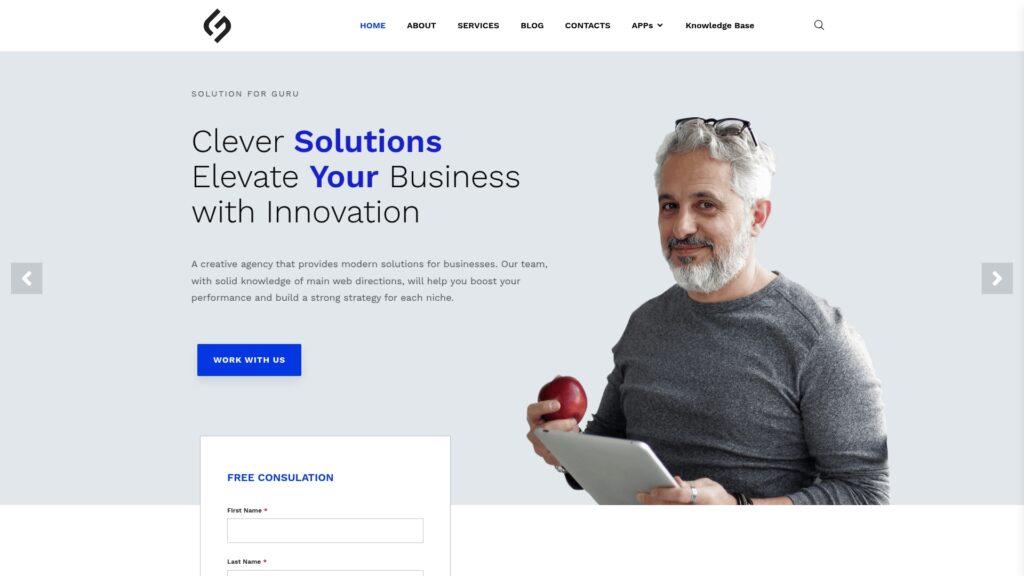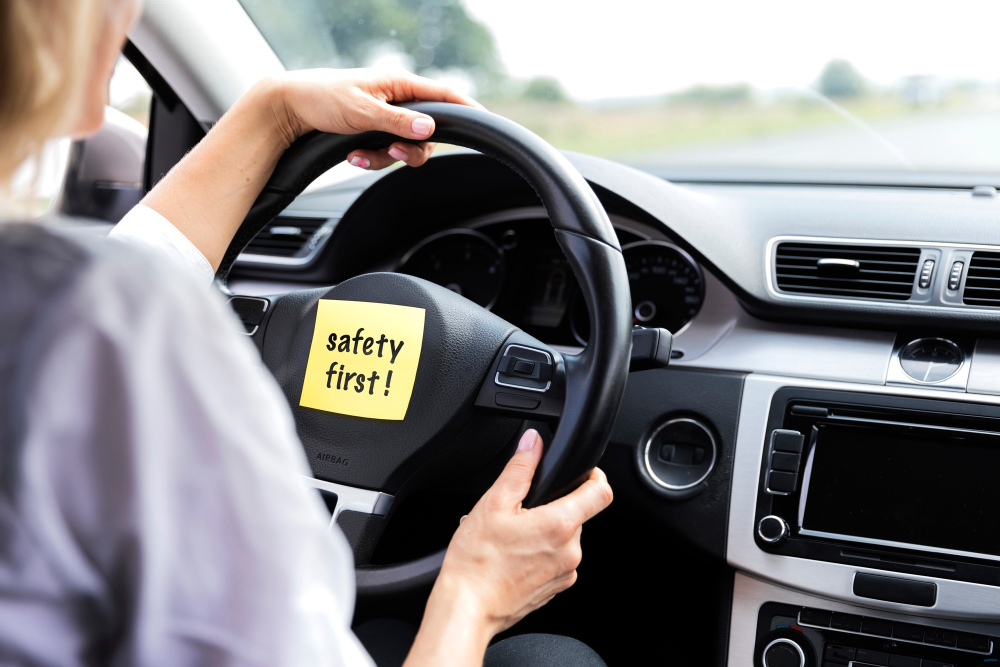Auto Insurance for New Drivers: A Complete Beginner’s Guide

Getting behind the wheel for the first time is an exciting milestone, but it also comes with significant responsibilities. One of the most crucial steps for new drivers is securing proper auto insurance coverage. Whether you’ve just earned your license or you’re helping a young driver navigate their insurance options, understanding the complexities of auto insurance can feel overwhelming. This comprehensive guide will walk you through everything you need to know about auto insurance as a new driver, from coverage types to cost-saving strategies, ensuring you make informed decisions that protect both your vehicle and your financial future.
Table of Contents
- Quick Summary
- What Should New Drivers Understand About Auto Insurance Coverage?
- Why Do New Drivers Face Higher Insurance Premiums?
- Which Insurance Companies Offer the Best Coverage for New Drivers?
- What Types of Coverage Do New Drivers Actually Need?
- How Can New Drivers Reduce Their Insurance Costs?
- Conclusions
- Frequently Asked Questions
Quick Summary
Key Takeaways for New Drivers:
- Higher Premiums Are Normal: New drivers typically pay 50-100% more than experienced drivers due to statistical risk factors and lack of driving history.
- Minimum Coverage Isn’t Always Enough: While state minimums are legal requirements, comprehensive coverage protects your financial future more effectively.
- Discounts Can Significantly Lower Costs: Good student discounts, defensive driving courses, and bundling policies can reduce premiums by 20-35%.
- Company Selection Matters: Providers like Progressive, BiBerk, Infinity Auto, and Next Auto Insurance US offer specialized programs designed specifically for new drivers.
- Building a Clean Record Pays Off: Every year of accident-free driving improves your rates and unlocks better coverage options.
What Should New Drivers Understand About Auto Insurance Coverage?
Auto insurance serves as a financial safety net that protects you from the potentially devastating costs associated with accidents, theft, and vehicle damage. For new drivers, understanding this fundamental concept is absolutely essential. Insurance isn’t merely a legal requirement in most states—it’s a critical financial tool that can prevent bankruptcy in the event of a serious accident.
Why Is Auto Insurance Mandatory?
In the United States, nearly every state requires drivers to carry at least minimum liability insurance. This requirement exists because accidents can result in catastrophic financial consequences. Without insurance, a single accident could leave you personally responsible for tens or even hundreds of thousands of dollars in medical bills, vehicle repairs, and legal fees. Consequently, insurance protects not only you but also other drivers on the road.
Moreover, driving without insurance carries severe penalties. Depending on your state, you could face hefty fines ranging from $500 to $5,000, license suspension, vehicle impoundment, or even jail time. Furthermore, being caught without insurance creates a gap in your coverage history, which insurance companies view negatively and can result in dramatically higher premiums when you eventually do purchase coverage.
What Makes New Drivers High-Risk?
Insurance companies classify new drivers as high-risk for several legitimate reasons. Statistical data consistently shows that drivers with less than three years of experience are involved in accidents at significantly higher rates than experienced drivers. Additionally, new drivers often lack the intuitive decision-making skills that develop through years of varied driving experiences.
Young drivers, particularly those under 25, face even steeper premiums because they statistically engage in riskier behaviors such as speeding, distracted driving, and driving under the influence. However, even older new drivers pay elevated rates simply because they lack a proven track record of safe driving.
The Foundation of Coverage Types
Understanding the basic types of coverage is crucial before shopping for insurance. Liability coverage pays for damage and injuries you cause to others. Collision coverage pays for damage to your vehicle regardless of fault. Comprehensive coverage protects against non-collision events like theft, vandalism, or weather damage. Additionally, uninsured/underinsured motorist coverage protects you when the at-fault driver lacks adequate insurance.
Each coverage type serves a distinct purpose, and therefore, new drivers must carefully evaluate their needs based on factors such as vehicle value, financial resources, and risk tolerance. While it may be tempting to purchase only minimum coverage to save money, this approach often proves costly in the long run when accidents occur.
Why Do New Drivers Face Higher Insurance Premiums?

The cost difference between new and experienced drivers can be shocking. On average, new drivers pay between $3,000 and $6,000 annually for full coverage, while experienced drivers with clean records might pay $1,500 to $2,500 for comparable coverage. Understanding why insurers charge these rates helps new drivers make informed decisions and identify opportunities to reduce costs.
Statistical Risk Factors
Insurance companies base their rates on extensive statistical data. According to the National Highway Traffic Safety Administration, drivers aged 16-19 are nearly three times more likely to be involved in fatal crashes compared to drivers aged 20 and older. Similarly, new drivers of any age demonstrate higher accident rates during their first few years behind the wheel.
These statistics aren’t mere speculation—they represent decades of claims data showing that inexperience correlates directly with accident frequency and severity. Consequently, insurers must charge higher premiums to offset the increased likelihood of paying out claims. This isn’t discrimination; rather, it’s actuarial science based on empirical evidence.
Lack of Driving History
Experienced drivers benefit from a documented history of safe driving. This history demonstrates responsibility and careful behavior behind the wheel. In contrast, new drivers lack this proven track record, forcing insurers to rely primarily on demographic data and risk categories.
Without a history to review, insurance companies cannot differentiate between responsible new drivers and risky ones. Therefore, all new drivers start in high-risk categories until they establish their own track records. This is why maintaining a clean driving record from day one is absolutely critical—every accident or violation will follow you for years and significantly impact your rates.
The Age Factor
While not all new drivers are young, those under 25 face additional premium increases due to age-related risk factors. Young drivers’ brains are still developing, particularly the prefrontal cortex responsible for risk assessment and impulse control. Furthermore, young drivers are more likely to engage in dangerous behaviors such as texting while driving, speeding, and driving with multiple passengers.
Male drivers under 25 typically pay even more than their female counterparts because statistics show they engage in riskier driving behaviors. However, these gender-based differences diminish significantly after age 25 as driving behaviors tend to stabilize.
| Risk Factor | Premium Impact | Duration |
|---|---|---|
| New Driver (Any Age) | +50-80% | 3-5 years |
| Age Under 25 | +80-100% | Until age 25 |
| Male Under 25 | +15-20% additional | Until age 25 |
| No Driving History | +30-50% | 1-3 years |
| High-Performance Vehicle | +25-75% | Ongoing |
| Urban Location | +10-30% | Ongoing |
Which Insurance Companies Offer the Best Coverage for New Drivers?
Not all insurance companies treat new drivers equally. While many major insurers offer coverage, some have developed specialized programs and pricing structures specifically designed to serve new drivers effectively. Let’s examine four companies that have established strong reputations for working with new drivers: Progressive, BiBerk, Infinity Auto, and Next Auto Insurance US.
Progressive: Innovation in New Driver Coverage

Progressive has distinguished itself as one of the most new-driver-friendly insurance companies in the market. Founded in 1937, Progressive has built its reputation on innovative approaches to risk assessment and customer service. For new drivers, Progressive offers several unique advantages that make it worthy of serious consideration.
The Snapshot Program: Progressive’s signature offering for new drivers is their Snapshot telematics program. This innovative tool allows new drivers to demonstrate safe driving habits in real-time, potentially earning significant discounts based on actual behavior rather than statistical predictions. The program monitors factors such as hard braking, acceleration patterns, time of day driving, and mileage. New drivers who drive carefully can earn discounts of up to 30%, making this an excellent option for responsible individuals looking to overcome the new driver premium penalty.
Name Your Price Tool: Progressive’s online tool allows new drivers to input their desired monthly payment, then automatically adjusts coverage levels to meet that budget. While this requires careful consideration to ensure adequate coverage, it provides transparency and control that many new drivers appreciate. This feature is particularly valuable for new drivers working with limited budgets who need to understand the trade-offs between cost and coverage.
Discount Opportunities: Progressive offers numerous discounts that benefit new drivers specifically. The continuous insurance discount rewards drivers who maintain coverage without lapses, even if they’re new to driving. The paid-in-full discount provides savings for those who can afford to pay their entire premium upfront. Additionally, Progressive offers multi-policy discounts for bundling with homeowners or renters insurance, which many young people establishing their first independent households find valuable.
Customer Service Infrastructure: Progressive maintains 24/7 customer service with multiple contact options including phone, mobile app, and online chat. For new drivers navigating their first claims or policy questions, this accessibility proves invaluable. The company’s mobile app receives consistently high ratings and allows policyholders to manage virtually every aspect of their coverage from their smartphones.
BiBerk: Specialized Coverage Solutions

While BiBerk is primarily known for business insurance solutions, their approach to coverage demonstrates expertise that benefits new drivers seeking comprehensive protection. BiBerk, backed by Berkshire Hathaway, brings financial stability and customer-focused policies to the insurance marketplace.
Flexible Coverage Options: BiBerk excels at providing customizable coverage solutions that can be tailored to specific needs. For new drivers who may be using their vehicles for side jobs or gig economy work such as delivery services, BiBerk offers specialized policies that bridge the gap between personal and commercial coverage. Many standard auto policies exclude coverage during commercial activities, leaving new drivers vulnerable if they’re earning income through rideshare or delivery apps.
Straightforward Policy Management: BiBerk emphasizes simplicity and transparency in their policy structures. New drivers often struggle with insurance terminology and complex policy documents. BiBerk’s approach strips away unnecessary complexity, presenting coverage options in clear, understandable language. This educational approach helps new drivers make informed decisions rather than simply accepting whatever coverage an agent recommends.
Digital-First Experience: BiBerk operates primarily online, which resonates with younger new drivers who prefer digital interactions. The platform allows for quick quotes, instant policy purchases, and streamlined document management. For tech-savvy new drivers, this modern approach eliminates the hassle of office visits and lengthy phone calls while still providing access to expert support when needed.
Infinity Auto Insurance: Affordable Solutions for High-Risk Drivers

Infinity Insurance has carved out a niche serving drivers who face challenges obtaining affordable coverage through traditional insurers. For new drivers struggling with high premiums, Infinity offers several compelling advantages.
Specialization in High-Risk Markets: Unlike insurers that treat new drivers as an afterthought, Infinity specifically designs products for high-risk categories including new drivers, drivers with limited credit history, and those in urban areas with higher accident rates. This specialization means Infinity understands the challenges new drivers face and structures policies accordingly.
Flexible Payment Options: Recognizing that many new drivers operate on tight budgets, Infinity offers highly flexible payment plans including monthly, bi-weekly, and even weekly payment options. This flexibility prevents coverage lapses due to temporary financial constraints, which is crucial since even a single day without coverage can result in higher premiums in the future.
Affordable Minimum Coverage: While comprehensive coverage is ideal, Infinity recognizes that some new drivers simply cannot afford full coverage initially. The company offers competitively priced state minimum coverage options that allow new drivers to meet legal requirements while they build their financial foundation. As circumstances improve, policyholders can easily upgrade their coverage levels.
Bilingual Support: Infinity provides extensive Spanish language support, making insurance more accessible to new drivers from diverse backgrounds. This commitment to serving multicultural communities sets Infinity apart and ensures that language barriers don’t prevent drivers from obtaining necessary coverage or understanding their policy details.
Next Auto Insurance US: Modern Solutions for Today’s Drivers

Next Auto Insurance US represents the new generation of insurance providers leveraging technology to provide better service at lower costs. For new drivers who have grown up with smartphones and expect digital-first experiences, Next offers compelling advantages.
AI-Powered Risk Assessment: Next utilizes advanced algorithms and artificial intelligence to assess risk more accurately than traditional methods. This technology-driven approach can benefit responsible new drivers by looking beyond simple demographics to consider broader factors. The system analyzes driving patterns, vehicle usage, and behavioral indicators to provide more personalized pricing.
Instant Policy Issuance: Next’s platform allows new drivers to obtain quotes, purchase coverage, and receive proof of insurance within minutes. This speed is particularly valuable for new drivers who need coverage immediately for vehicle purchases or registration. The streamlined process eliminates days or weeks of waiting for traditional insurers to process applications.
Usage-Based Insurance Options: Similar to Progressive’s Snapshot, Next offers usage-based insurance programs that monitor actual driving behavior. However, Next’s program integrates more seamlessly with smartphone technology, often eliminating the need for separate plug-in devices. New drivers can demonstrate safe driving habits immediately, potentially earning discounts from day one rather than waiting for annual renewal periods.
Transparent Pricing Structure: Next provides unprecedented transparency in how they calculate premiums. The platform breaks down exactly which factors contribute to your rate and by how much. For new drivers concerned about high premiums, this transparency helps identify specific areas where behavior changes or policy adjustments could reduce costs.
What Types of Coverage Do New Drivers Actually Need?
Determining the appropriate coverage level represents one of the most important decisions new drivers face. While budget constraints often push new drivers toward minimum coverage, understanding each coverage type’s purpose helps you make informed trade-offs between cost and protection.
Liability Coverage: Your Legal Foundation
Liability coverage is mandatory in nearly every state and forms the foundation of any auto insurance policy. This coverage pays for injuries and property damage you cause to others in an accident. Liability coverage divides into two components: bodily injury liability and property damage liability.
Bodily injury liability covers medical expenses, lost wages, pain and suffering, and legal fees if you injure someone in an accident. Property damage liability covers repairs or replacement of other vehicles, buildings, fences, or property you damage. State minimum requirements typically range from $25,000 to $50,000 per person and $50,000 to $100,000 per accident for bodily injury, with $10,000 to $25,000 for property damage.
However, these minimums are dangerously inadequate. A serious accident can easily generate $100,000 or more in medical bills for a single person, and vehicle repairs for multiple cars can exceed $50,000. If your liability coverage is insufficient, injured parties can sue you personally for the difference, potentially garnishing wages, seizing assets, or forcing bankruptcy.
Recommended Liability Levels for New Drivers: Financial experts and insurance professionals typically recommend minimum liability coverage of 100/300/100 ($100,000 per person, $300,000 per accident for bodily injury, and $100,000 for property damage). While this costs more than state minimums, the incremental cost is surprisingly modest—often $200-$400 annually—while providing dramatically better protection. For new drivers who may lack substantial assets, this might seem unnecessary, but remember that future earnings can be garnished if you’re found liable for damages exceeding your coverage.
Collision Coverage: Protecting Your Investment
Collision coverage pays for damage to your vehicle when you collide with another vehicle or object, regardless of who caused the accident. If you financed or leased your vehicle, your lender almost certainly requires collision coverage. Even if you own your vehicle outright, collision coverage provides valuable protection.
New drivers should carefully consider their vehicle’s value when deciding on collision coverage. If your car is worth less than $3,000-$4,000, collision coverage may not be cost-effective because the annual premium could approach or exceed potential payouts. However, for vehicles worth more than $5,000, collision coverage typically makes financial sense.
Choosing the Right Deductible: Collision coverage requires selecting a deductible—the amount you pay out-of-pocket before insurance covers the rest. Common deductibles range from $250 to $2,000. Higher deductibles reduce your premium but increase your financial exposure in an accident. For new drivers, a $500-$1,000 deductible often provides the best balance. This amount is high enough to meaningfully reduce premiums but low enough that most people could handle it without severe financial hardship.
Comprehensive Coverage: Beyond Accidents
Comprehensive coverage protects against non-collision events such as theft, vandalism, fire, flood, hail, falling objects, and collisions with animals. Like collision coverage, lenders typically require comprehensive coverage for financed vehicles. The cost of comprehensive coverage is generally lower than collision because these events occur less frequently than accidents.
For new drivers, comprehensive coverage is particularly valuable if you live in areas with high rates of vehicle theft, severe weather, or significant wildlife populations. Additionally, if you park on the street rather than in a garage, comprehensive coverage provides important protection against vandalism and break-ins.
Deductible Considerations: Comprehensive coverage also requires a deductible, typically ranging from $100 to $1,500. Unlike collision deductibles, many experts recommend selecting a lower comprehensive deductible ($250-$500) because comprehensive claims typically don’t increase your rates the way at-fault accidents do. This allows you to actually use your coverage for smaller incidents without worrying about premium increases.
Uninsured/Underinsured Motorist Coverage: Protecting Against Others’ Mistakes
Despite legal requirements, approximately 13% of drivers nationwide operate without insurance. In some states, this number exceeds 20%. Uninsured motorist (UM) coverage protects you if an uninsured driver causes an accident. Underinsured motorist (UIM) coverage protects you if the at-fault driver carries insufficient coverage to pay for your damages.
For new drivers, UM/UIM coverage is absolutely essential. You cannot control whether other drivers carry adequate insurance, and being hit by an uninsured driver can leave you with massive medical bills and vehicle damage with no way to recover costs. UM/UIM coverage fills this gap, essentially providing you with the coverage the other driver should have had.
Coverage Recommendations: Experts recommend UM/UIM coverage matching your liability limits (100/300 for bodily injury is common). This coverage is remarkably affordable—typically adding just $100-$200 annually to your premium—making it one of the best values in auto insurance. Some states require UM/UIM coverage, while others make it optional, but new drivers should always include it regardless of state requirements.
Personal Injury Protection and Medical Payments: Covering Healthcare Costs
Personal Injury Protection (PIP) and Medical Payments (MedPay) coverage pay for medical expenses resulting from accidents, regardless of fault. PIP, required in no-fault states, is more comprehensive and may cover lost wages and essential services. MedPay is simpler and only covers medical expenses but is available in all states.
For new drivers, the value of PIP or MedPay depends largely on your health insurance coverage. If you have comprehensive health insurance with low deductibles and copays, additional medical coverage may be redundant. However, if you lack health insurance or carry high-deductible health plans, PIP or MedPay provides crucial financial protection.
Coordination of Benefits: It’s important to understand how medical coverage coordinates with your health insurance. Typically, auto insurance medical coverage pays first, then health insurance covers remaining expenses. This can prevent you from depleting health insurance benefits and potentially facing higher premiums or deductibles on your health policy.
Gap Insurance: Protecting Against Depreciation
Gap insurance is specifically relevant for new drivers who financed or leased new or nearly-new vehicles. This coverage pays the difference between what your vehicle is worth and what you still owe if your car is totaled. New vehicles depreciate rapidly—often losing 20% of their value within the first year—creating a “gap” between the loan balance and the vehicle’s actual value.
If you financed more than 80% of your vehicle’s purchase price, put less than 20% down, financed for longer than 60 months, or purchased a vehicle that depreciates quickly, gap insurance is practically essential. Without it, a total loss accident could leave you owing thousands of dollars on a vehicle you can no longer drive.
When Gap Insurance Isn’t Necessary: If you paid cash for your vehicle, made a substantial down payment (30% or more), or purchased a used vehicle that’s already past its steepest depreciation, gap insurance is unnecessary. Additionally, once your loan balance drops below your vehicle’s value—typically after 2-3 years of payments—you can drop gap insurance.
How Can New Drivers Reduce Their Insurance Costs?

While higher premiums are inevitable for new drivers, numerous strategies can significantly reduce costs without sacrificing essential protection. Implementing multiple cost-reduction strategies can lower premiums by 30-50%, making insurance substantially more affordable.
Discount Programs: Immediate Savings
Insurance companies offer numerous discounts, and new drivers should aggressively pursue every available option. The cumulative effect of multiple discounts can be substantial.
Good Student Discount: Full-time students maintaining a B average or better (typically 3.0 GPA) qualify for good student discounts ranging from 10-25%. This discount recognizes that academic responsibility often correlates with responsible driving. Most insurers require proof of grades, so be prepared to submit report cards or transcripts. This discount typically remains available until age 25 or graduation, whichever comes first.
Defensive Driving Courses: Completing an approved defensive driving course demonstrates commitment to safe driving and typically earns 5-15% discounts. These courses, available online or in-person, teach collision avoidance techniques, proper following distances, and hazard recognition. Furthermore, many states allow defensive driving course completion to remove points from your license, providing dual benefits of lower insurance costs and improved driving records.
Multi-Policy Bundling: Combining auto insurance with renters or homeowners insurance with the same company typically saves 15-25% on both policies. For young drivers establishing their first independent household, bundling provides significant savings. Even if you’re living with parents, you might save by bundling with their policies.
Multi-Vehicle Discounts: Insuring multiple vehicles with the same company earns discounts of 10-25% per vehicle. New drivers living with family should ensure all vehicles are insured under one policy to maximize savings. Some insurers also offer discounts for insuring multiple drivers in the same household.
Low Mileage Discounts: Drivers traveling fewer than 7,500-10,000 miles annually often qualify for low mileage discounts of 5-15%. If you live close to work or school, use public transportation, or carpool regularly, make sure your insurer knows. Many new drivers overestimate their annual mileage; tracking your actual usage could reveal savings opportunities.
Telematics Programs: Usage-based insurance programs like Progressive‘s Snapshot or similar offerings from other insurers monitor your driving behavior through smartphone apps or plug-in devices. Safe drivers can earn discounts of 20-30%, making these programs extremely valuable for responsible new drivers. These programs typically monitor factors including hard braking, rapid acceleration, speeding, time of day driving, and total mileage.
Vehicle Selection: Long-Term Cost Impact
The vehicle you drive dramatically affects insurance premiums. New drivers should consider insurance costs before purchasing vehicles, as some cars cost two or three times more to insure than others.
Avoid High-Performance and Luxury Vehicles: Sports cars, luxury vehicles, and high-performance models carry substantially higher insurance premiums due to increased theft rates, expensive repairs, and higher accident rates. A new driver in a Toyota Camry might pay $3,000 annually while the same driver in a BMW M3 could pay $8,000 or more.
Choose Vehicles with Good Safety Ratings: Vehicles with high safety ratings and advanced safety features like automatic emergency braking, lane departure warning, and blind spot monitoring often qualify for safety discounts. Additionally, safer vehicles reduce your likelihood of serious injury in accidents, indirectly protecting your financial future.
Consider Older Vehicles: Insuring older vehicles costs less because comprehensive and collision premiums are based on vehicle value. A five-year-old vehicle might cost 30-40% less to insure than a new vehicle, even for the same model. If you’re purchasing your first vehicle, prioritizing reliability and low insurance costs over newness can save thousands annually.
Research Insurance Costs Before Buying: Before purchasing any vehicle, obtain insurance quotes for that specific make, model, and year. Insurance costs should factor into your vehicle budget alongside purchase price, fuel costs, and maintenance. Many buyers discover too late that their “affordable” vehicle carries unaffordable insurance premiums.
Policy Structure Optimization: Finding the Right Balance
How you structure your policy significantly impacts costs while maintaining adequate protection.
Adjust Deductibles Strategically: Increasing your deductible from $250 to $1,000 can reduce comprehensive and collision premiums by 30-40%. However, ensure you can afford to pay the higher deductible if you need to file a claim. Many financial experts recommend maintaining an emergency fund equal to your deductible before opting for higher deductible amounts.
Re-evaluate Coverage Annually: As your vehicle ages and depreciates, collision and comprehensive coverage may become less cost-effective. Generally, when your vehicle’s value drops below $3,000-$4,000, consider dropping these coverages and maintaining only liability, UM/UIM, and any required coverages. Calculate the annual premium for collision and comprehensive and compare it to your vehicle’s value; if premiums exceed 10-15% of the vehicle’s value, consider dropping these coverages.
Pay Premiums in Full: Paying your entire premium upfront rather than monthly typically saves 5-10% through paid-in-full discounts and elimination of monthly installment fees. If possible, save for your semi-annual or annual premium payment rather than paying monthly.
Maintain Continuous Coverage: Insurance companies penalize coverage gaps with higher premiums. Even if you’re not driving temporarily, maintain coverage to preserve your insurance history. If you genuinely don’t need coverage for an extended period, consider non-owner insurance policies that maintain coverage continuity without insuring a specific vehicle.
Building Credit and Maintaining Clean Records
Two factors often overlooked by new drivers have substantial long-term impacts on insurance costs.
Improve Your Credit Score: In most states, insurance companies use credit-based insurance scores to determine premiums. Drivers with excellent credit pay 50% or less than drivers with poor credit for identical coverage. New drivers should focus on building good credit by paying all bills on time, keeping credit card balances low, and gradually establishing a positive credit history. Even small credit improvements can reduce insurance premiums significantly.
Drive Defensively and Avoid Violations: Every ticket and accident increases premiums for 3-5 years. A single speeding ticket can increase premiums by 20-30%, while at-fault accidents can raise rates by 40-50% or more. For new drivers already facing high premiums, violations become even more costly. Defensive driving isn’t just about safety – it’s about protecting your financial future.
| Cost Reduction Strategy | Potential Savings | Implementation Difficulty | Time to Benefit |
|---|---|---|---|
| Good Student Discount | 10-25% | Easy (if applicable) | Immediate |
| Defensive Driving Course | 5-15% | Easy | Immediate |
| Multi-Policy Bundling | 15-25% | Easy | Immediate |
| Telematics Program | 20-30% | Moderate | 6-12 months |
| Higher Deductibles | 30-40% | Easy | Immediate |
| Vehicle Selection | 30-50% | Moderate | At purchase |
| Credit Improvement | 20-50% | Difficult | 6-24 months |
| Clean Driving Record | 40-60% | Moderate | 3-5 years |
Conclusions
Navigating auto insurance as a new driver undoubtedly presents challenges, particularly regarding the financial burden of higher premiums. However, understanding how insurance works, what coverage you need, and how to reduce costs empowers you to make informed decisions that protect both your safety and your financial future.
Throughout this guide, we’ve explored why new drivers face elevated premiums, examined the essential coverage types, and identified numerous strategies for reducing costs without sacrificing necessary protection. Most importantly, we’ve emphasized that adequate coverage is not an optional expense but rather a critical investment in your financial security.
The key to success as a new driver lies in taking a proactive, informed approach to insurance. Compare multiple providers including these specialists, take advantage of every available discount, choose vehicles wisely, maintain clean driving records, and review your coverage regularly as your circumstances change. Remember that every year of safe, responsible driving improves your rates and expands your coverage options.
Finally, never compromise on essential coverage to save money in the short term. The financial devastation from a single uninsured or underinsured accident far exceeds any premium savings. Instead, focus on legitimate cost-reduction strategies like higher deductibles, telematics programs, and multiple discounts while maintaining adequate liability, collision, comprehensive, and uninsured motorist coverage.
As you build your driving history over the coming years, your premiums will naturally decrease, reflecting your proven track record of responsibility. Until then, make smart choices, drive defensively, and view insurance not as an unwanted expense but as essential protection for your financial future.
Frequently Asked Questions
Auto insurance costs for new drivers vary significantly based on age, location, vehicle type, and coverage selections. On average, new drivers can expect to pay between $3,000 and $6,000 annually for full coverage, though rates can be higher in urban areas or for young drivers under 25. Teen drivers often face the highest premiums, sometimes exceeding $7,000 annually when added to family policies.
However, these are averages, and your actual costs may differ substantially. Implementing cost-reduction strategies such as good student discounts, defensive driving courses, higher deductibles, and telematics programs can reduce premiums by 30-50%. Additionally, companies like Infinity Auto specialize in making coverage affordable for new drivers through flexible payment plans and competitive pricing structures.
The most effective way to determine your actual cost is obtaining quotes from multiple insurers including Progressive, BiBerk, Infinity Auto, and Next Auto Insurance US. Each company weighs risk factors differently, so comparison shopping is essential. Furthermore, your premiums will decrease each year you maintain a clean driving record, with most drivers seeing significant reductions after three to five years of safe driving.
Generally, insurance companies require a valid driver’s license to purchase standard auto insurance policies. Insurance is designed to cover licensed drivers operating vehicles legally, and most insurers view unlicensed drivers as unacceptable risks. However, several exceptions and alternatives exist depending on your specific situation.
If you own a vehicle but don’t yet have your license – perhaps you’re learning to drive or the vehicle belongs to a household member – you may be able to obtain parked car insurance or list yourself as an excluded driver on someone else’s policy. Additionally, some insurers offer non-owner insurance policies for individuals who regularly drive but don’t own vehicles, though these typically still require a valid license.
Benefits of Cooperation with Solution for Guru Company
Navigating the complex world of auto insurance as a new driver can feel overwhelming, especially when balancing coverage needs, budget constraints, and the multitude of available options. This is where partnering with Solution for Guru (https://www.solution4guru.com/) provides invaluable advantages that simplify the insurance selection process while ensuring you secure optimal coverage at competitive rates.

Whether you’re purchasing your first policy, seeking to reduce current premiums, or simply want expert guidance through the insurance selection process, their professionals provide the knowledge and support needed to make confident decisions about your auto insurance coverage.
In an insurance marketplace designed primarily for experienced drivers, having an advocate who specializes in serving new drivers provides a crucial advantage. Solution for Guru bridges the knowledge gap, ensuring you receive appropriate coverage at competitive rates while avoiding the costly mistakes that many new drivers make when navigating insurance independently.



